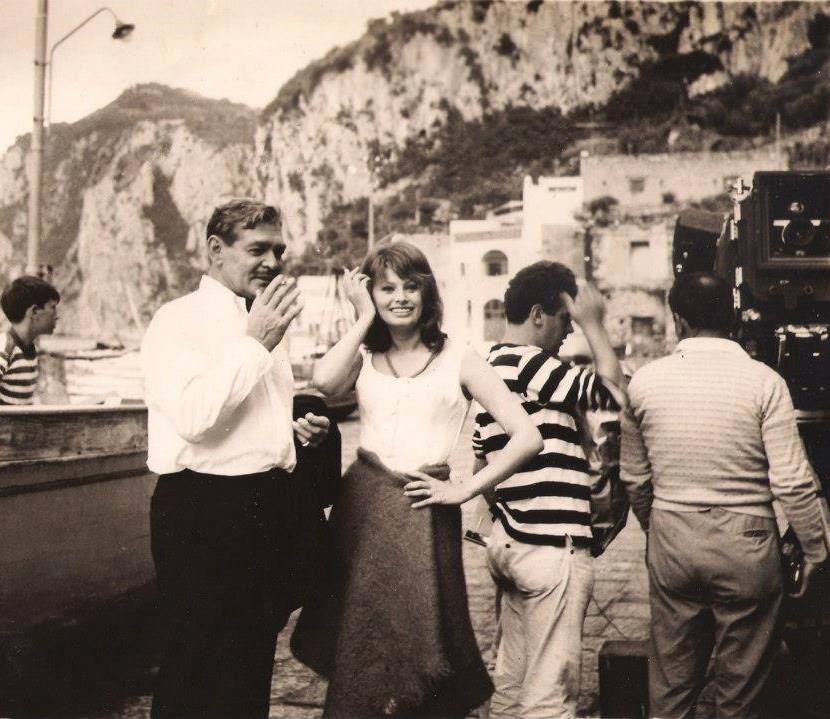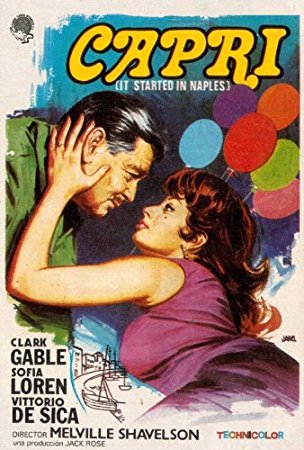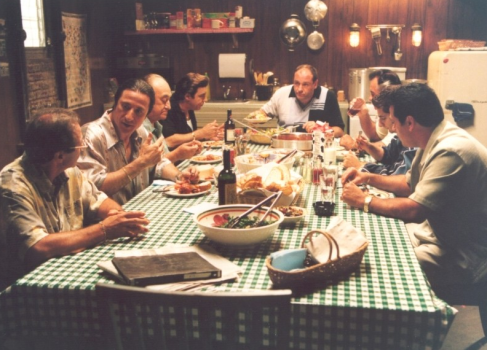The BELLINO FAMILY of Lodi, New Jersey
Immigrated to New York City from Lercara Friddi Sicily in 1904
Before settling in Lodi, where Filipo opened a Shoemaker Shop on Main Street
Can you imagine what it was like to say goodbye to your family, your home and your friends? To leave for a strange country, not knowing the language, and with little or no money? Who would do such a thing? Why would anyone do something so drastic?
The following is not "pretty story." It is however a TRUE STORY that ends well, and it needs to be told, and told again and again, lest future generations forget. It is the history of our families emigration to America....why they came and what it was like when they got here.
Going to America
Most Italian immigrants never planned to stay in the US permanently. There is even a special phrase that was coined for Italians: "Birds of Passage" since their intent was to be migratory laborers. Even though about 75% of Italian immigrants were farmers in Italy, they did not wish to farm in the US (as it implied a permanence that did not figure in their plans). Instead, they headed for cities where labor was needed and wages were relatively high. Many Italian men left their wives and children behind because they expected to return (and many, many did). In any event, for many Italian immigrants, migration could not be interpreted as a rejection of Italy. In fact, it is a defense of the Italian way of life, for the money sent home helped to preserve the traditional order. Rather than seeking permanent homes, they desired an opportunity to work for (relatively) high wages in the city and save enough money to return to a better life in Italy. Very commendable considering the difficult conditions that characterized life in southern Italy in those times. These conditions were a result of many different factors.
The History

The vast majority of immigration came from the former Independent and Sovereign State of southern Italy, the Kingdom of the Two Sicilies. It included all continental southern Italy from Abruzzi, to Calabria and Puglia, and Sicily. It was occupied in 1860, without a declaration of war, by the northern Piedmontese Kingdom ruled by the House of Savoy (Kingdom of Sardinia). A ten-year bloody civil war followed, and, as a result, about one million people, Neapolitans and Sicilians, were murdered by the Italian Army of occupation. The National Treasury of the Two Sicilies was robbed and appropriated by the invaders. Even machines from Neapolitan factories were moved to the North. Severe economic depression followed.
Although southern Italy's troubles can be attributed to exploitation by their own people, I don't believe it is fair (or historically accurate) to attribute all the suffering to northern Italians alone. In fact, for centuries in all of Italy the entire peninsula was divided into feuding states, with foreign powers often ruling one or several states. In this chaotic situation, the feudal system ruled the economic system. Specifically, the feudal system allowed hereditary land possession to determine one's political power and social status, so many poor Italians had almost no opportunity to improve their lives. But it is true, that southern Italians suffered more hardships than those in the North. The Italian government was dominated by northerners, and southerners were hurt by high taxes and high protective tariffs on northern industrial goods. Additionally, much of southern Italy's problems can be attributed to it's lack of coal and iron ore which was needed by industry; extreme scarcity of cultivatable land, soil erosion, deforestation, and overpopulation. For the North, their higher level of industrialism meant less poverty and agricultural difficulties. On top of all of that, several natural disasters rocked southern Italy during the early 20th century: Mt. Vesuvius erupted burying an entire town near Naples, Mt. Etna's eruption, the 1908 earthquake and tidal wave that swept through the Strait of Messina, which killed more than 100,000 people in the city of Messina alone.
Ellis Island

(The following text is from "The World's Work" written in 1902)
I welcomed Florio Vincenzo when he came over to become one of us. He had no doubts of the future for he wooed the Goddess of Good Fortune boldly. Florio is fourteen; he came from Palermo. He traveled light. When he opened his cheap paper valise, it was apparently empty, save for a pair of discredited and disreputable old shoes. Florio bowed, cap in hand, and his white teeth flashed as he smiled suavely:
There was an odor that an old inspector knew. He picked up one of the shoes and extracted from it, after some manipulation, a creased and crumpled hunk of Bologna sausage. The other shoe was stuffed with a soft, sticky and aggressively fragrant mass of Italian cheese. These articles and a sum of Italian money equivalent to about $1.80, and the clothes he stood in, formed the basis on which Florio expected to rear his fortune.
Pietro Viarilli was gray-haired, round-shouldered, and weazened. He, too, had come make his fortune. His impedimenta consisted of one padlocked canvas valise lined with paper and containing two striped cotton shirts, one neckerchief of yellow silk blue flowers and edges, one black hat (soiled and worn), one waistcoat, two pairs of woolen hose of gay design, one suit of underwear, one pint of olive oil and about half a peck of hard bread biscuits. Until his arrival the list included a quart of Vesuvian wine of the rich purple hue one may buy in cheap cafes in Naples. Carelessly Pietro had slung his valise from his shoulder, and had smashed his bottle, drenching his store of biscuits. He and his companions had munched them greedily until the supply was exhausted.
Money Brought by the Immigrants
At the examination the immigrants are asked to show their money. Some craftily fail to show it all; others willingly display their whole petty hoardings. The money is carefully counted, and, after a record has been taken, restored to them. Later, they are asked if they wish any money changed. Many refuse for fear of being cheated; others stop before the busy money-changers' booth at the end of the long examination room.
Last year the 388,931 immigrants showed $5,490,080, an average of $14.12 The French led all the others with an average of $39.37. The Hebrews stood at the foot of the list bringing on an average $8.58. The Germans followed the French with an average of $31.14. The other nationalities stood in the list as follows:
Race Average per Capita
Italians(Northern) $23.53
Bohemian and Moravian $22.78
Scandinavian $18.16
Irish $17.10
Armenian $15.75
Croation and Dalmation $15.54
Greek $15.10
Slovak $12.31 Magyar $10.96
Italian(Southern) $8.67
Roughly speaking, the North-of-Europe people make better citizens than those from the South of Europe. The better class go to the country and the worst to the cities. Greeks are considered about the least desirable of all; the Italians from the southern portion of the peninsula also make poor citizens; but those from the northern part of Italy rank with the Swiss and other desirable nationalities.
At Work
In an open ditch, red and raw under a broiling sun, sixty-five Italian immigrants, stripped to the necessities, toiled silently with shovel and pick. A hard-faced, red-necked man, their taskmaster, walked up and down the trench, and wherever he stopped the men worked with feverish speed. Temporarily, at least, this will be the fate of thousands of the other immigrants who flowed in through Ellis Island in this year's spring flood, the greatest in twenty years.
These Greeks and the Southern Italians, however, who live by selling fruit from the push carts in the city streets, earn considerable sums of money. An old Italian was detained at Ellis Island, preparatory to being deported because he had arrived here penniless. He sent for his son, a push-cart man, who had been in this country just one year. The boy (he was not more than twenty) brought his book showing deposits aggregating $250. This money represented the sum he had saved. He impressed upon the inspectors his ability to support his father, and the old man was admitted. The boy said his expenses were about $7.00 a week, and that he did not work for a padrone, but was an independent merchant.(End of text from "The World's Work" written in 1902)
Life In A New World
And so... to America we came, hundreds upon hundreds of thousands until we were more than four million. We faced overwhelming prejudice, poverty and the isolation of being in a strange and unfriendly country. The majority came to the US when they were very young with high hopes for a better future for themselves and their families. They found that not only were the streets not paved with gold but that they were expected to pave them. We soon discovered that we were here to do the dirty work that nobody else wanted to do. We came to a place that considered us and treated us as less than equal. (Read the comments written above.) We were regarded as low class, stupid and inferior.
We had to learn how to hide our foreignness. We had to learn how to fit in and to adapt and so we did. However, we still held our heads high and we were still proud of where we came from and of who we were. The mainstream of society tried to humbled us, but we refused to believe that they were better than us and we refused to be treated as inferior. We learned to speak English, we found jobs, we started our own businesses. We joined unions and we even formed our own unions. We bought our own homes and we succeeded in spite of the prejudice, discrimination, and less than friendly welcome we received in the US.
We stuck together and even managed to preserve the Italian way of life back in Italy by sending home a great deal of money. In the US, Italians mobilized to preserve their culture. In Italian neighborhoods, Italian shops and other businesses sprung up. Italians made it a habit to buy from other Italians. We kept the money in the community and we prospered. I remember my father would never buy from a 'mericano' (American) if he could by it from an Italian. Italian-American newspapers were published in major cities, immigrant-aid and fraternal societies were formed --i.e., Sons of Italy etc. All of this greatly helped the continuously arriving immigrants who in addition to the strong Italian work ethic, brought dance, music and food! In fact, Italian food is now a staple of the American diet.
Filipo Bellino
1904
SANTO CARUSO and NUNZIA PIGNARERO CARUSO
On Their WEDDING DAY
COOKING SICILIAN
FRANK SINATRA with daughter NANCY (L)
and Parents DOLLY and MARTINO SINATRA
Frank Sinatra's father, born Severino Antonino Martino Sinatra in Lercara Friddi, Sicily in 1857, immigrated to New York City from Palermo, Sicily in 1903. Marty Sinatra (as he was called) married Natalia Garaventa in Jersey City, NJ on Valentines Day, February 14, 1914. The couple settled in on Monroe Street in Hoboken, New Jersey where Francis (Frank) Albert Sinatra was born on December 12, 1915 ...
Natalia Maria Vittoria Garaventa (aka Dolly) was born on December 26, 1896 in town near Genoa, Italy, and her parents immigrated to America when Natilina was just 2 months old in 1897.






































